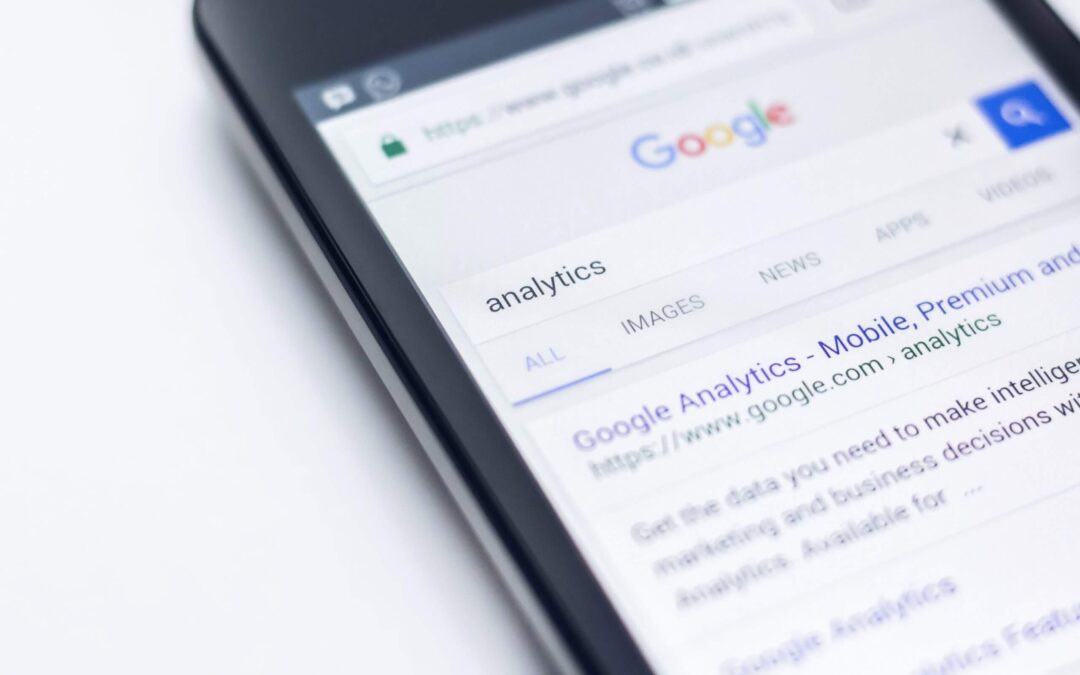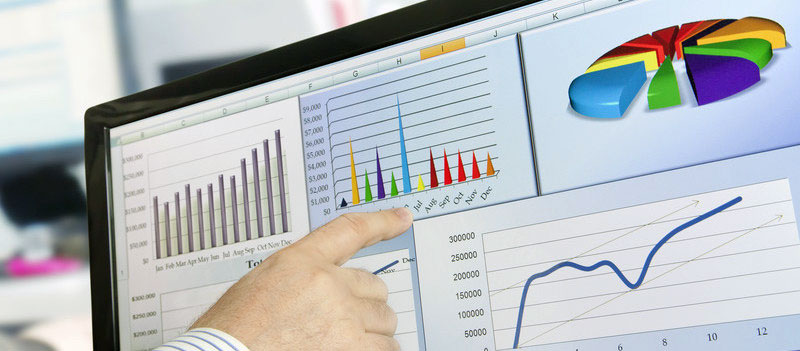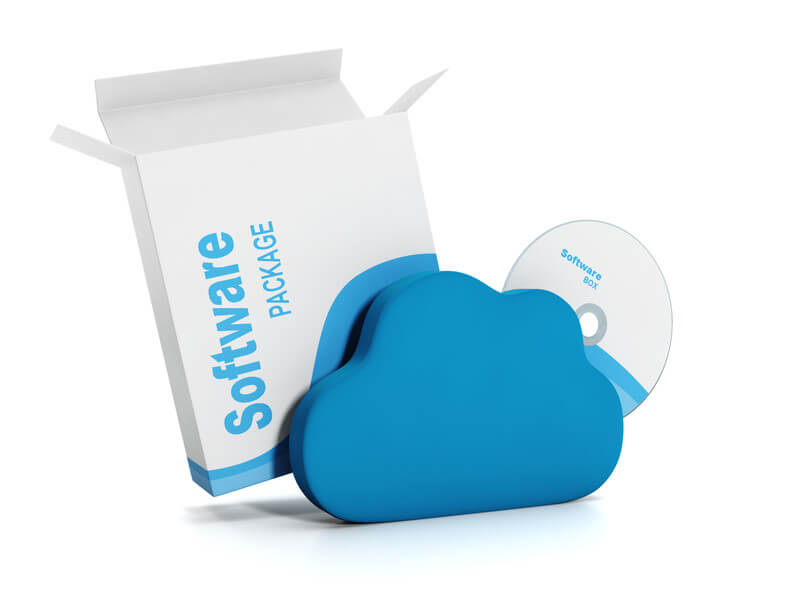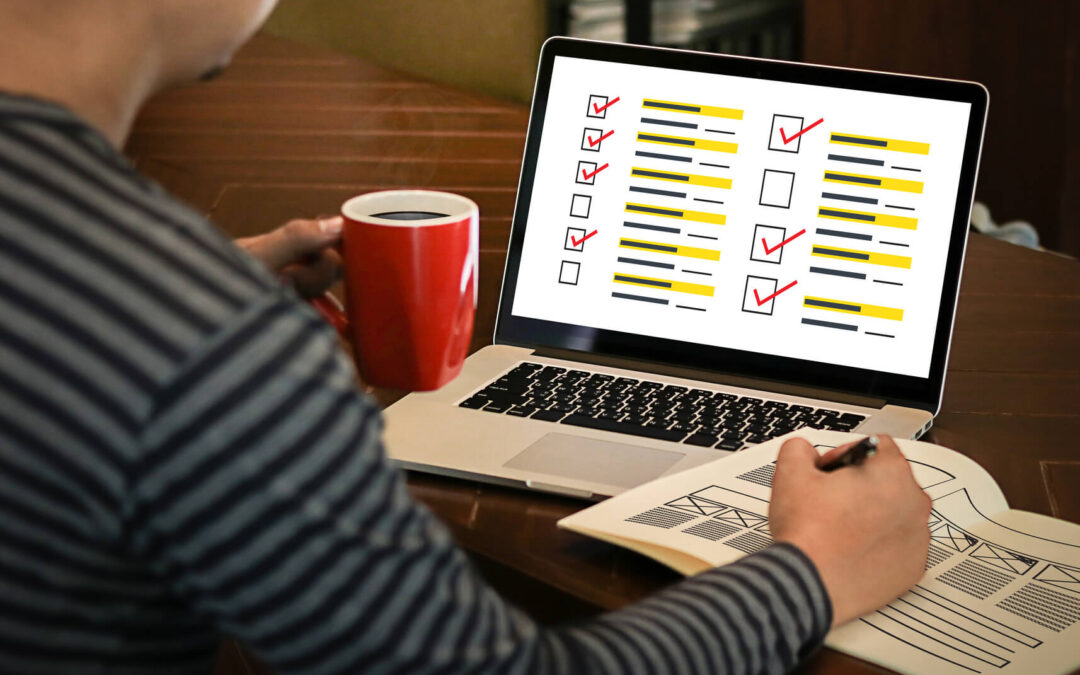
by levi_hb | Mar 12, 2019 | Tools
Digital solutions that allow suppliers to know their customers are more readily available now than ever before. It is important to have a well rounded marketing plan that includes the use of digital tools in order to reach and engage your audience, specially corporate meeting planners and event professionals who are in charge of tens of millions in meeting spend.
If you are considering to implement new digital sales tools to your sales strategy to increase your numbers and make an impact in your organization, there are some digital sales and marketing tools in the market that are worth considering.
AMI spotlights five easy and highly effective ways to understanding how your customers engage with your business in today’s digital world.

- Google Analytics: How are your customers interacting with your website? What pages are capturing their attention, (and, which aren’t)? How did they arrive on your page? All of these analytics provide valuable insight into your customer and can help you develop a more effective online presence.
- Google Trends: Which search terms are trending? Understanding search trends within your industry will allow you to optimize your website’s SEO, keywords and can do wonders to help uncover new business opportunities.
- SurveyMonkey: Directly engage with your clients and get feedback on where you can improve. Ask open ended questions and allow for your customer to use their own words.
- Meetingsoft: It’s all about access to Meeting Planners and your “go-to place” to connect with Meeting Planning Talent. AMI’s global network brings together the best meeting planning talent, venues, technology, and services worldwide–to build and flawlessly deliver the custom virtual and live meeting experiences our clients demand for engaging their key audiences.
- HubSpot: If you’re looking for a CRM that allows you to manage all of your customers data in a single cloud-based system, that also offers state-of-the-art marketing solutions, look no further than HubSpot. By providing a wealth of templates, options and tracking methods and a user-friendly platform, HubSpot will allow you to see the full picture of your marketing and sales efforts and provide a deeper understanding into what truly drives your customers.
The key to success with these tools is basically about how you use them, how frequent and how you measure and interpret results. If you follow these best practices, you will immediately notice how faster your sales cycle will be and how easier will be to close those sales!

by levi_hb | Apr 3, 2018 | Technology, Tools
Tracking data online has been made easy by the use of metrics and tools like tracking pixels, but many companies despair of getting similar results in real-world settings. After all, how do you track a real-world sales funnel unless a customer provides you with data by filling out a survey, for example? In this era of nearly unfettered technological advances, there is a solution for event hosts that want to act as a fly on the wall, so to speak, and follow attendees during their time at the event: session tracking.
Much like online metrics allow you to follow customers from the moment they click through an ad to your website so you can measure time spent on site, pages visited, bounce rates, purchase activity, return visits, and more, you can use session tracking technologies to see where event attendees go and what they do, to an extent, during your event. This is made possible by radio frequency identification (RFID) technology being embedded in every badge issued for your event.
When guests check-in and receive their badges, they’ll have to wear them to gain entry to the event venue, as well as activities like exhibit halls, panels, receptions, and so on. This provides you with the opportunity to track their movements in real-time, seeing which guests show up for sessions and social events, how long they stay, where they go in an exhibit hall (i.e. which booths they visit), and so on.
From an event management standpoint, this provides an incredible amount of useful data. At the very least, it’s a quick and easy way to track and report attendance for continuing education credits. Of course, you’ll also have plenty of data for later analysis and insight into what appealed most to attendees.
Working with an event company like American Meetings, Inc. (AMI), you can not only gain access to the technologies needed to track attendees, but also the strategies to use them to your best advantage, as well as opportunities for follow-up. How can the information you gather help to improve your future events? Here are a few reasons why session tracking is so important to event planning.
Understand and Adjust Your Audience With Session Tracking
For any meeting or event, you have a target demographic (or several) in mind. Are they the right audience? Is your content having an impact on them? Or is your failure to meet goals the result of choosing the wrong audience or approaching them in the wrong way?
The data you collect via session tracking can help to give you a more complete understanding of attendees, their preferences, and their action, especially when paired with data gathered during registration and in follow-up measures like surveys and polls. It may turn out that attendees simply aren’t the right audience, in which case you and your event company can work on a strategy to target more suitable guests in the future.
Use Session Tracking to Gauge the Value and Effectiveness of Content
For any event, entertainment and activities are often the biggest draws, and they comprise the most important part of your event management strategy. Without content, attendees have no reason to be there, after all.
If you’ve done everything possible to get the right people to attend your event and your efforts are still falling flat, the problem could be that your content is lackluster. Session tracking can help you to determine which content is hitting home with an audience and which is failing to engage. Whether attendees leave a session early en masse or they linger long after to discuss the content with speakers and fellow guests, you’ll gain insight into the effectiveness and value of specific content.
Determine Event Management Priorities With Session Tracking
Tracking where event attendees go can give you all kinds of information about what you and your event planning partner need to work on for future events. You can pinpoint disconnects with content, find out if certain exhibit booths or activities get considerably more or less attention, and determine if greater security is needed, just for example.
Says VP, Account Management at AMI, Chelsea Litos, “The beauty of session tracking is how much data it can provide as attendees move through your event. Knowing how to interpret and use that data can help you to address problem areas and tweak strategies for ever-greater successes at future events.”
Work with Your Event Company to Evaluate Overall Success
When it comes to event management, session tracking may be an afterthought, with all the other balls you’re juggling. However, if you want to accomplish goals, the data gathered through session tracking is indispensable. When you partner with an expert event company like AMI, you’ll have the tools and experience to implement tracking methods and ultimately evaluate the overall success of every event.

by levi_hb | Feb 22, 2018 | Technology, Tools

The right event management software is almost as invaluable as working with a reputable meeting services organization.Fort Lauderdale
Event management and planning is a complex and multifaceted process that requires unique technology for organization and efficiency. In addition to managing basics like scheduling and guest lists, software can be used for marketing and promotional efforts, recruitment, media for events, registration, follow-ups, and maintaining contacts, including vendors and event management staff, among other tasks.
In other words, the right event management software is almost as invaluable as working with a reputable meeting services organization like American Meetings, Inc. That said, many business owners, event organizers, and other business professionals involved in planning events are not software experts. Even with some idea of the tasks involved, you might not have the first idea of what to look for in software suitable for planning, managing, and executing successful events. Here are just a few things you’ll want to look for when it comes to suitable event management software.
Budgetary Concerns
The bottom line is often the first concern, and while you certainly want the best software solutions for your particular needs, you still need to work within your given budget when making a purchase, or at least be able to justify the additional expense. Keep in mind that there could be further or ongoing costs associated with the software you choose, in addition to the up-front price tag.
Make sure you understand any costs for professional training for employees, potential costs for integration with existing software or systems, fees for usage or adding users, and costs for necessary upgrades, just for example. You should also consider whether or not paying more for certain software or features now could save you money down the line by increasing efficiency, improving recruitment opportunities, decreasing dependence on outside vendors like marketing and promotional agencies, and so on. Knowing overall costs is an important part of selecting the right event company software to manage your meetings and events.
All-Inclusive Event Management Functionality
What exactly do you need your event management software to do for you? There are a lot of programs on the market offering a wide variety of features where event management is concerned. You only want to pay for the functionality you need, so it pays to consider use value.
For example, you may need a program that provides you with options for scheduling, guest lists, invitations, registration, follow-up, and so on, but you may already have software designed for marketing your event and managing logistics like venues and vendors. You may rely on an experienced event company like AMI to manage certain aspects of your meetings or events, in which case you might not need to shell out the dough for related software. Your specific needs will determine the functionality of the software you ultimately choose.
Integration
If you’ve been in business for long, you know that integration is a key consideration with any new software implementation. If your team is already comfortable working with certain software solutions related to event management, you’ll want to make sure you choose new software that is compatible so you can seamlessly integrate new and old programs and hit the ground running.
In some cases, you’ll find that software providers you already use have options for event management software that will meet your needs, practically guaranteeing easy integration. You might also consider upgrading to software that replaces disparate programs with a complete system for event management.
Ongoing Support
“Support is a critical element of event management software that is often overlooked,” says Chelsea Litos, VP Account Management for AMI. “If you want to get the most out of your product, ongoing support can make a big difference, and you need to know what your software provider offers.” Many companies will provide training resources, often through online videos, but in-person training sessions with an expert member of the team might cost you.
It’s important to ask about ongoing support for training, troubleshooting, and emergency situations, at the very least. You might also want to find out a software provider’s policies on updates, bug fixes, and support for the current iteration of their software, as well as information on anticipated upgrades.
Event Company Approval
Consulting with your event company before choosing new software is a smart move, especially if they manage some or all of the technical details of your events, from guest lists and online registration to logistics and follow-up surveys, just for example. Your partner in event management may be uniquely qualified to help you find appropriate software for your needs.
When you work with a company like AMI, you not only gain access to technology, logistics, and strategic planning and event management services, but you also get a partner that can help you to choose the best software solutions for your meeting and event planning needs.

by levi_hb | Jul 10, 2017 | Tools
It is all too easy to neglect current vendor relationships when there is no crisis or obvious decision point in sight. But to do so is to miss a great opportunity to be strategic and proactive in your Supplier Relationship Management (SRM). Being more involved and hands-on after you’ve selected a vendor can help you and your company build more valuable and productive relationships. And it can help you realize, in a timely manner, when it might make sense to consider changing vendors.
Of course, you’re busy. Probably very busy. So, how can you realistically implement an SRM plan? We have a simple yet strategic tool that could help and that you can adapt and scale to fit your needs.
Our Supplier Scorecard lets you measure vendor performance and share that information with your internal partners and your vendors so that you can assess and improve vendor relationships. We’ll walk you through the process, but first let’s skip right to the punchline and take a look at a Supplier Scorecard and the insights it can offer.
The Sample Supplier Scorecard shown below assesses a hypothetical vendor, Shiny Cleaning Supply. They are rated on six categories, each on a scale of 1 to 10, with 1 being the worst and 10 being the best. A quick glance shows us a couple of useful things.
Case Study – Shiny Cleaning Supply Company

When it comes to Flexibility, Quality of Service, and Cost, Shiny Cleaning Supply is doing very well. Timeliness and Communication look to be problem areas. A bit of further investigation may show that these two are closely linked. Let’s say that Shiny Cleaning Supply is often hard to communicate with and not timely in their responses to requests. Maybe these problems are traceable to one or several Shiny employees or a particular type of communication.
Because Shiny will already be familiar with the scorecard tool and what they are being assessed on, when issues like the above arise, it’s best practice to set up a meeting and generate a plan for improvement as the next step. Hopefully you’ll see improvement and if not you’ll be able seek out new prospective vendors, which you can assess using our Ideal Supplier Map Tool.
Let’s back up and explain the process.
First, identify what you want to measure. Think about what is most important to your company when it comes to vendor relationships. Cost is a concern for almost everyone, but likely quality of service, communication and product quality are also very important. For each dimension, we recommend that in addition to a title, such as “Timeliness,” that you also develop a description. For example: Are deadlines met in a timely manner? Does business proceed without delays? If you can include particular benchmarks or quantitative measures, do so. This description will make it so that everyone in your organization and your vendors understand the criteria you are using. To make it manageable but also sufficiently detailed, we’d suggest choosing between 4 and 8 categories.
Once you’ve identified your categories, decide on a scoring or weighting system. In our example, all categories are weighted equally and we’ve used a scale of 1 to 10. You could, for example, create a system that totals to 100 possible points. Or if product quality is most important for your company, you can weight that more heavily.
Second, share your scorecard. Share it first with internal stakeholders and then with your vendors. Most vendors will be happy to know the criteria against which they are being measured. At AMI, we certainly love knowing what is most important to our clients, what we’ve done well, and what could use improvement. Explain to your vendors why you’re developing a supplier scorecard and that you’re committed to long-term collaborative vendor relationships. In rolling out your scorecard, it can be a good idea to let your vendors have some input and also to allow for a trial period during which data is collected but not acted upon.
Third, implement, monitor, and refine as needed. You may want to set up regular reporting intervals, perhaps quarterly. And you’ll also want to establish general processes for addressing unsatisfactory vendor performance. In most cases, you’ll probably want to give your vendor a chance to improve. But if that improvement is not forthcoming, you are then equipped to make a strategic choice about changing vendors. If you need help assessing and choosing vendors, please see our previous blog post, which includes our Ideal Supplier Map Tool.
To get started, download our Supplier Scorecard Tool here.
We like the Supplier Scorecard approach because it is scalable and adaptable. You can always add elements to your scoring and measurement system, and it’s relatively easy to get started quickly. We hope you adapt these ideas for your company and find this a valuable tool.
Want to talk more about developing criteria to evaluate potential or current Meetings and Events suppliers? Contact us at (866) 337-7799 or bd@AmericanMeetings.com.

by levi_hb | Jul 5, 2017 | Tools
If you’re responsible for supplier sourcing, likely you’re under the gun to make decisions that will best serve your company and that will save time and money. But you also need to make sure your suppliers help you meet other key objectives and deliver value overall to further company goals.
That’s no easy task, especially since you’re being asked to do more with less, more often. Carving out the time to create, deliver and implement an organization-wide sourcing strategy and processes is difficult. To make matters more complicated, comparing and vetting potential vendors is usually not apples to apples, and such calculations typically involve multiple criteria or dimensions (e.g., cost, quality of service, etc.).
There is no single silver bullet, but we’ve got a couple of tools that may help you with supplier sourcing and management in your overall procurement strategy. Please take a look.
Our Ideal Supplier Map lets you compare vendors across multiple criteria and easily visualize this information in a spider diagram. The sample map below shows how three potential (and hypothetical) cloud services vendors measure up. In this case, we can see that despite the more superlative names, it makes sense to go with Integrated Cloud Services based on how they rank against various criteria.
Sample ideal supplier map
Let’s back up a bit. Our sample supplier map includes five criteria. Each one is an important vendor capability and characteristic. For this situation, we chose: cost, quality of service, expertise, innovation, and ability to grow.
Our ideal supplier map tool explains more fully what each of these criteria measures. It’s best to define and set your criteria against your company values, culture, goals and priorities, so that you and others organization-wide know how to assess potential suppliers and vendors. Discussing, determining and aligning on these measures is a key step in driving and ensuring consistency.
Make sure you adapt this tool so that it fits your organization’s specific needs. Add, subtract and revise the criteria in ways that capture what’s most important for your situation. Once you’ve established your criteria and articulated what each measures, you’re ready to assess and compare. We’ve set the scale from 1 to 10 with 1 being the worst and 10 being the best.
Try out the Ideal Supplier Map for yourself and see how it can help you:
- Compare potential vendors across multiple criteria
- Ensure that your vendors not only meet tactical objectives, but also support your company’s growth
- Share and communicate your procurement decision-making process
- Understand and weigh procurement tradeoffs
Ultimately, the Ideal Supplier Map is meant to help support your long-term strategy for sourcing suppliers and vendors organization-wide.
You can download the Ideal Supplier Map here.
Hopefully you find the map helpful and something that makes your job a little easier. While it won’t solve all your problems, it can help you vet and choose the right kind of suppliers.
Next week we’ll be sharing our Supplier Scorecard – a tool for evaluating and managing current suppliers so you can assess and improve those relationships, and determine when it might make sense to change suppliers.
Want to talk more about developing criteria to evaluate potential or current Meetings and Events suppliers? Contact us at (866) 337-7799 or bd@AmericanMeetings.com.







